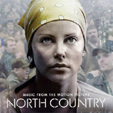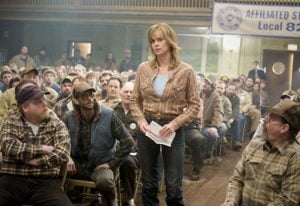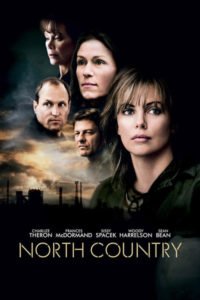
Our revels now are ended. These our actors,
As I foretold you, were all spirits, and
Are melted into air, into thin air:
And, like the baseless fabric of this vision,
The cloud-capped towers, the gorgeous palaces,
The solemn temples, the great globe itself,
Yea, all which it inherit, shall dissolve,
And, like this insubstantial pageant faded,
Leave not a rack behind. We are such stuff
As dreams are made on; and our little life
Is rounded with a sleep.
Shakespeare, The Tempest, 4. 1
The enemy is at the gates….
Tell Ol’ Bill is another one of Dylan’s ‘soundtrack songs’, written – like Things Have Changed, Waiting For You and Cross The Green Mountain – in order to illustrate the themes of a particular film. But, as with all these songs, Dylan uses these themes as a starting point for exploring wider concerns. While Things Have Changed twists its midlife-crisis cynicism into a comic masquerade and Cross The Green Mountain transforms the story of a dying soldier in the American Civil War into a series of intense reflections on human conflict, Tell Ol’ Bill turns an individual’s struggle for freedom and justice into a profound meditation on human will power .The song was written for the North Country (dir. Nick Caro, 2005) a drama set in the 1970s in Dylan’s own home territory of the Minnesota Iron Range (as immortalized in his own North Country Blues and Girl Of The North Country) and is a fictionalized account of how a female mine worker and single parent Josey Aimes (played by Charlize Theron) was involved in fighting the first successful action against sexual harassment in the US after being abused and attacked by male co-workers and ignored by a callous management. The film is very much in the tradition of American liberal social realism established by films like Mr. Deeds Goes To Town, To Kill A Mockingbird and Silkwood. The song attempts to get inside the mind of the main character, describing her frustrations at the position she finds herself in and eventually resolving to tackle the problem head-on.

The version of the song which appears on Tell Tale Signs is different to the one which appeared on the movie soundtrack. Though Dylan’s singing remains gently subdued throughout, the drums in particular are more pronounced, making the song more rhythmic and the whole performance somewhat more passionate. The song seems to have been tried out in a number of different ways, as revealed in a bootleg tape of the sessions (one of the few to have escaped from Dylan’s studio work in the last two decades) during which it seems at different times to be evolving into a slow blues, a country lament and a pained ballad. Despite the musical differences, the lyrics remain virtually the same throughout the twelve different versions on the tape, suggesting that Dylan composed the piece as a poem and then proceeded to set it to music. Both released versions tend to tread something of a middle ground between the more extreme musical forms being played with in the studio. The version on Tell Tale Signs is an impeccable example of Dylan’s modern singing style, full of subtle, querulous phrasing. Dylan inhabits the voice of a modest but brave narrator and conveys a sense of quiet courage without ever falling into over-emotionalism.

Dylan is careful to pronounce each word clearly here. The song features a carefully structured balance between lyrical imagery and determined emotion. The correlation between the images of the natural world and the narrator’s thoughts are carefully and skillfully built up. While the scene being depicted is undoubtedly cold and harsh: … the rocks are bleak/ the trees are bare/ Iron clouds go floating’ by…. there is a certain magical quality to this harsh North Country landscape, with its …tranquil lakes and streams… and …snowflakes falling in my hair…. which seems to indicate Dylan’s love for and empathy with his home territory. What is most impressive about the use of language here is the expansiveness of its imagery within its disciplined, compressed format. One of the best examples is the opening verse: ….The river whispers in my ear/ I’ve hardly a penny to my name/ The heavens have never seemed so near/ All my body glows with flame… The narrator seems to be in a kind of trance, with the spirits of nature talking to her. Out here in the cold North Country she feels lifted up, enraptured. The contrast between material poverty and spiritual enrichment is achieved with admirable economy and precision. In the next verse the beautiful and mysterious line …the tempest struggles in the air… with its immediately contrasting …and to myself alone I sing.. is perhaps the most impressive example of symbolist writing in the song. There are times when Dylan demonstrates an innate feeling for the placement of a particular word and here the use of ‘struggle’ following ‘tempest’ creates a memorable metaphorical resonance. The lone singer, searching into the depths of her soul, is engaged in a kind of tempestuous struggle with herself, trying to face up to the darkness within. The very sound of the words expresses this just as effectively as whatever symbolic meaning they may have.

The next verses take us further into this darkness. The narrator searches for …one smilin’ face/ to drive the shadow from my head… She cries …why must you torture me within?…. and rages against the spirits of nature: ….Why must you come down off your high hill?/Throw my fate to the clouds and wind…. Again the language is direct, precise – a kind of Blakean ‘plain speak’ which is colloquial but simultaneously symbolic. It is as if she has been twisted up herself by the struggling tempest, the wild spirit of the bleak land, which exists both outside and inside her. This spirit which tortures her causes her to have …secret thoughts… which are …hard to bear… But she is left alone, with … emotions we can never share … One of the key moments in the film occurs when it is revealed that Josey’s child was conceived when she was raped by her teacher and the lines in the next verse … You trampled on me as you passed/ Left the coldest kiss upon my brow… express the emotional aloneness of one who has experienced such an ordeal for withering clarity. Yet from this point onwards, the narrator begins to gather the inner strength she will need for the oncoming struggle. …All my doubts and fears have gone at last… she confesses …I’ve nothing more to tell you now… After howling at the wind and the spirits of the air in despair she begins to come to a cold realisation. She now understands that … the enemy is at the gates… From here on, the scenery is transformed. In another remarkable transposition of colloquial and figurative language she contrasts the raging incoherence of the oppressive spirit: …Beneath the thunder-blasted trees/ The words are ringin’ off your tongue… with symbolic descriptions of nature which reflect on her new, hard-won determination. …The ground is hard in times like these… she declares. Now she is standing on solid, firm earth. And, even more remarkably …stars are cold, the night is young… contrasting in a single short line an image of her own fortitude with a sly reworking of a common cliché. The stars are cold and so now is her heart and her ‘iron will’ (reflected in the ‘iron clouds’ that pass above her).
In the final verses her determination to enact revenge grows. Now darkness begins to fall on the landscape, a darkness that is reflected in the corruption she has to face up to: …The woods are dark, the town is too/ They’ll drag you down, they run the show/ Ain’t no tellin’ what they’ll do.… But she is ready now to face up to these ‘enemies at the gates’. When, in the penultimate verse ‘Old Bill’ arrives, she shows herself to be fully prepared: …Tell him that I’m not alone/ That the hour has come to do or die… She declares that …All the world I would defy… She is ready to take on the elements now, to still the raging torrent that surrounds her. And she stares her enemy directly in the face with a final expression of compassion: ….I look at you now and I sigh/ How could it be any other way… Her enemy may have tried to ‘throw her fate to the clouds and wind’ but she has taken control of her own destiny. Such is Dylan’s skill with language here that he makes his Girl Of The North Country’s ‘struggle with the tempest’ inside and outside her into a profound expression of the triumph of an individual spirit against great adversity. On one level the song is, like so many of Dylan’s most heartfelt works, another exploration of the process of poetic creation itself. The singer here is almost consumed by imagery before he finds the willpower to channel it into focus, as if the poet is attempting to ‘struggle’ with a ‘tempest’ of language that hovers above him in the air, just out of reach. The words express both the savage glory and the terror of the seeker for inspiration. For Dylan this search is, as always, a spiritual one.
But who is ‘Ol’ Bill’, the apparent subject of the song? ‘Bill’ makes only a fleeting appearance, personifying the narrator’s helper. In fact the lawyer who wins Josey’s case in North Country is called Bill. ‘Ol’ Bill’ is also a stock character who appears in a number of very old Negro folk songs. One from the Georgia islands runs: …Old Bill the rollin’ pin, he had a hog eye and a double chin… Here ‘Old Bill’ is a policeman. In England ‘Old Bill’ is also a popular slang term for the police. Actually Dylan seems to have lifted the title line from a traditional song called Tell Old Bill which appeared in Carl Sandburg’s compendium of American folksongs American Songbag, first published in 21927. The song goes …Tell Old Bill when he gets home/Leave them downtown gals alone… At the end of the song Old Bill meets a sorry fate …They brought …poor dead Bill – – his toes were a-draggin’… It is typical of the latter-day Dylan to insert such phrases from old songs, although this is the only instance of this practice here. This is a small, playful touch in a lyric which mostly avoids the sometimes complex patterns of reference Dylan frequently uses in his songs of this period (especially on the Modern Times album). The song is relatively free from direct allusions, although its language – using natural imagery as metaphorical representations of inner turmoil – is often reminiscent of Shakespeare’s poetic methodology. The reference to ‘thunder blasted trees’ recalls the ‘blasted heath’ in King Lear and the ‘North Country’ scenario resembles such a devastated wilderness. The centrality of the image of the ‘tempest’ in the song also recalls Shakespeare’s play of the same name, wherein the ‘tempest’ has a similar symbolic significance. If Tell Ol’ Bill can be taken as a song about the struggle poets face with inspiration than who better a ‘helper’ than Ol’ Bill Shakespeare himself?

OL’ BILL HIMSELF…
As with Cross The Green Mountain, it is fortunate that Tell Ol’ Bill was rescued from the obscurity of being on the soundtrack album of a relatively little-known film and was placed on Tell Tale Signs. In its own way, it is just as much a major latter-day Dylan work, showcasing many of his most effective and evocative poetic techniques. And like the greatest blues songs, it delves into the darkest recesses of the human heart and comes out fighting defiantly, celebrating nothing less than humanity itself.
A different version of this text appears in DETERMINED TO STAND: THE REINVENTION OF BOB DYLAN
————————————————————————————————–
DYLAN LINKS
DAILY DYLAN NEWS at the wonderful EXPECTING RAIN
THE BOB DYLAN PROJECT- COMPREHENSIVE LISTINGS
STILL ON THE ROAD – ALL DYLAN’S GIGS
THE CAMBRIDGE BOB DYLAN SOCIETY


Leave a Reply